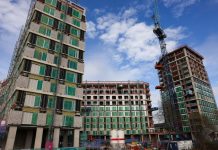Developers have been urged to have their say on Bristol City Council’s Community Infrastructure Levy – which property experts believe could make some development across the city more expensive.
Louise Seaman from the Bristol office of Colliers International said the levy – described as a new city roof tax – sets out the level of tax developers will be expected to pay when constructing new floorspace across the city from 2014.
She said: “Although offices and industrial development will be exempt from the proposed levy, it will still have considerable impact on the retail, hotels and student accommodation sectors which Bristol relies so heavily on.”
The Community Infrastructure Levy is a Government initiative aimed at replacing the present Section 106 agreement – under which developers undertake specific works on or around a site in return for their planning permissions.
Louise Seaman explained: “The proposed levy is intended to generate a single pot of funds that the council can use to pay for wider infrastructure projects across the City.
“Developers could find themselves paying toward a new road project miles away from the intended development site. In time, the new levy will replace site specific obligations imposed on developers through the Section 106 agreements developers will be familiar with. “
Louise Seaman said Bristol’s announcement of the charging schedule would be welcomed by certain sectors but will frustrate others as it could make sites more expensive to develop.
“Bristol City Council has said in the interests of job creation and economic growth it will not be applying the charge to new offices and industrial development.
“But the tax applied for other land uses such retail, hotels and student accommodation may discourage new investment in these key sectors.
“These all tend to be based on city centres and the levy could hinder companies looking at redeveloping sites and restrict wider regeneration of this area.”
The city council has identified two separate bands to cover residential development in the city. The inner zone based on the city centre, Clifton and Bristol’s sought-after northern fringe where development costs per square foot will be greater, alongside an outer zone encompassing the southern suburbs where development costs will be comparatively cheaper.
The consultation process allowing developers across all sectors the opportunity to submit representations will close on January 20 2012.
Louise Seaman concluded: “The accompanying CIL analysis shows that residential developers in most cases will be having to pay more under the new regime than the previous Section 106 system. Again, this will be not be viewed as good news in the housing market.
“We would therefore urge all developers with a stake in the regeneration of Bristol to have their say on the levy before it is too late.”
© Copyright 2022. All Rights Reserved.





















